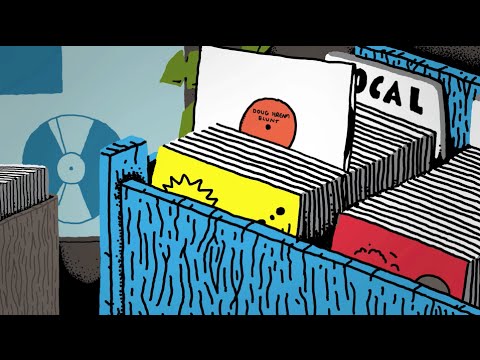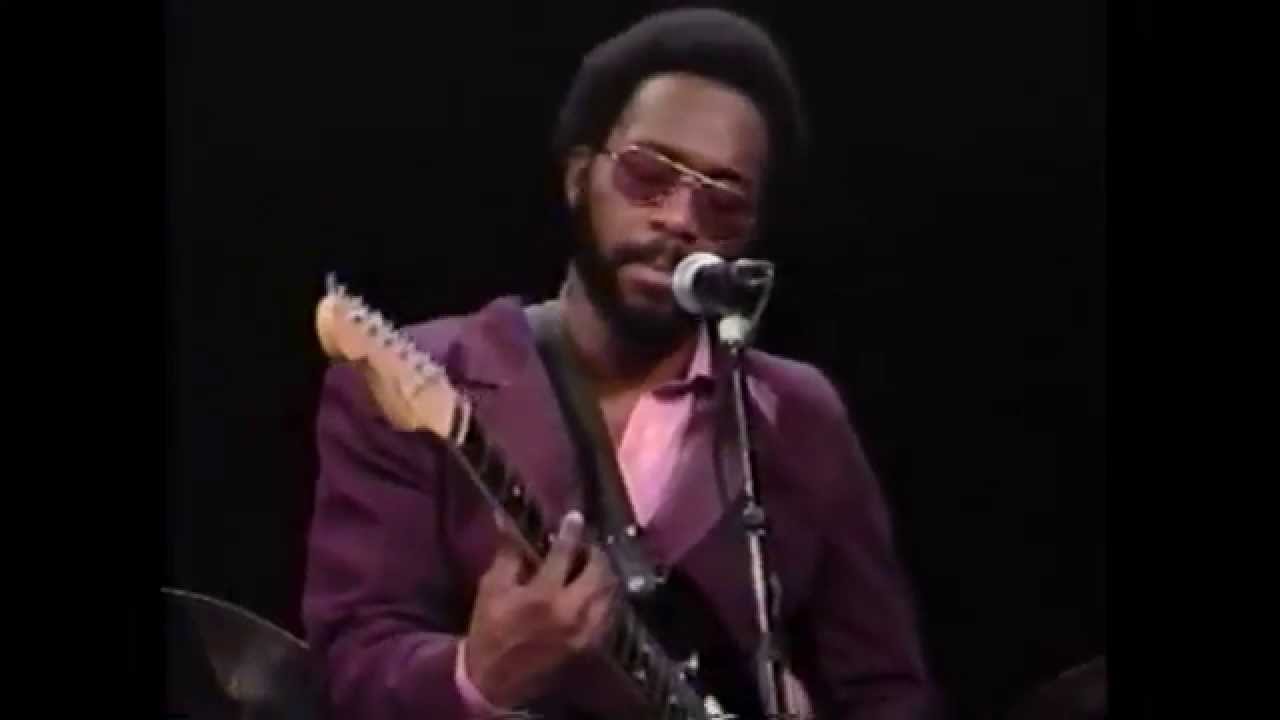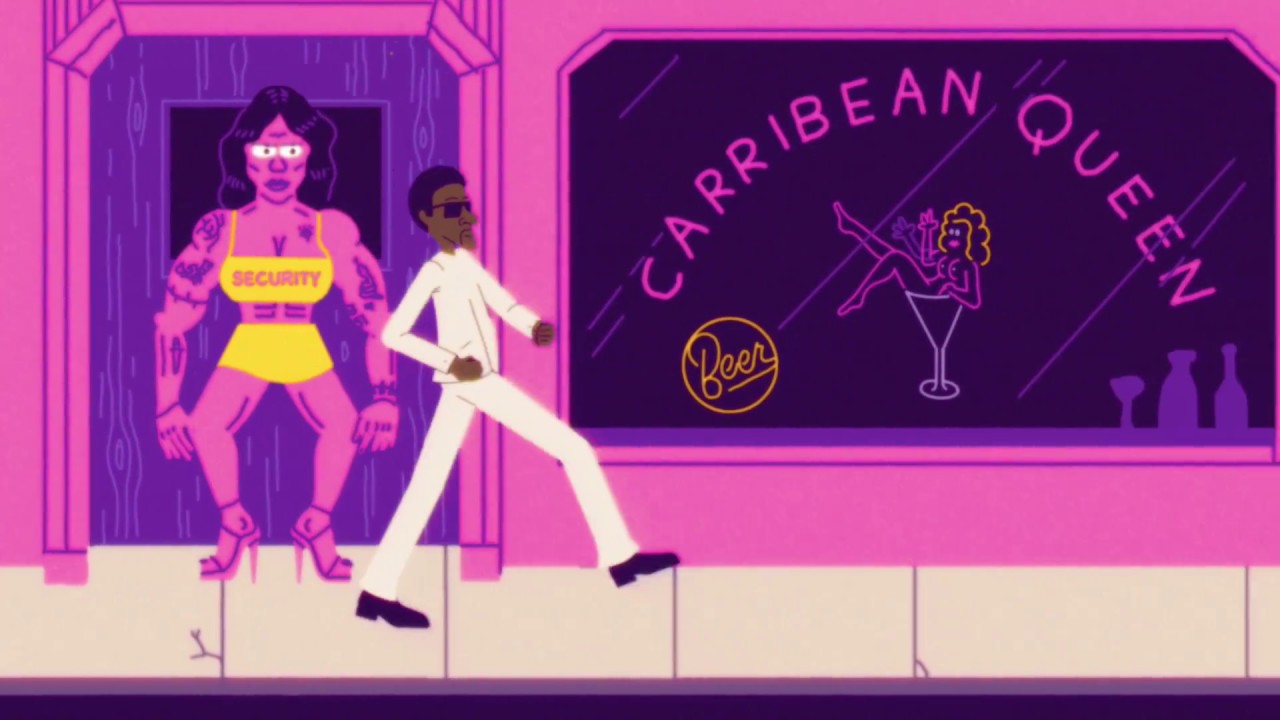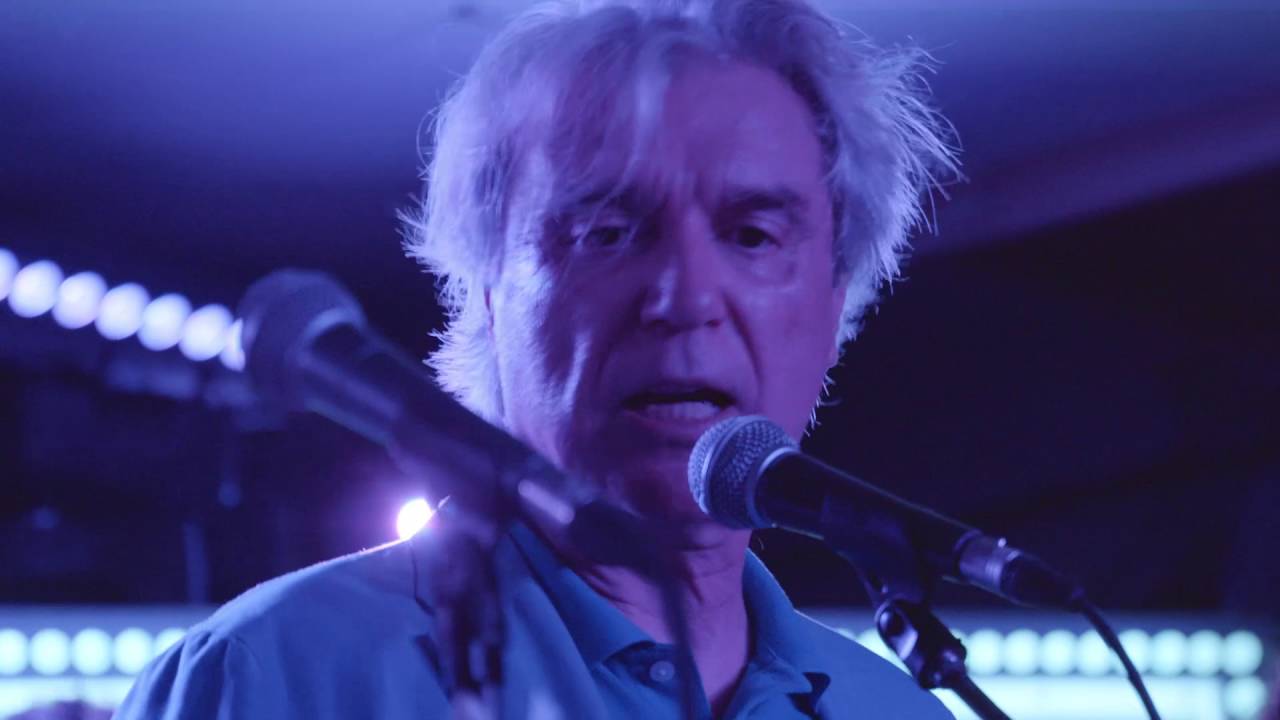In 2015, Luaka Bop released My Name Is Doug Hream Blunt, a reissue of material from the musician’s one and only album Gentle Persuasion after its thirty years spent in obscurity. Recorded in 1985 after Blunt had seen an advert on the side of a lamp post for a class called ‘How To Form A Band’, the intervening three decades had seen the record’s charming weirdness captivate collectors, but it was not until the reissue that the extraordinary story behind it became fully known to listeners at large.
Filmmaker Geoffrey Hug was one of those introduced to Blunt’s music by the Luaka Bop reissue. “It sounded shockingly familiar, yet bold and fresh simultaneously,” he recalls. “I couldn’t pinpoint what era it was from and what the sonic elements were that created it which intrigued me, and the lyrics were wild…”
Plotting a number of release shows across the world – from Moscow to Tasmania to New York – Luaka Bop took inspiration from the randomness with which Blunt had formed his first band in the 80s and enlisted a different group of musicians for every show they played, often including schoolchildren. Among those who responded to their call-out was Hug. “Within an hour of hearing Gentle Persuasion and seeing his ad for a crowd-sourced band, I’d filmed myself playing along to it and was thrilled to be accepted into the band as a drummer. Imagine my surprise when, within a week, I’d been booted from the throne for a 13-year-old and showed up to the first rehearsal with my Craigslist bongos and a camera…”
For the show in New York that Hug had signed up for, a band of 13-14 year olds called Clover And The Clockworks were enlisted for most of the instrumental duties, while Hug remained as a percussionist. More importantly, however, he and Luaka Bop’s Eric Welles Nyström started talking about making a film. Nyström showed Hug a short animation the label had produced about Blunt’s remarkable life story, how after his father died in an explosion at work in Arkansas Blunt’s mother moved him and his eight siblings to San Francisco (and once there adopted another child). How, while working as a nurse, he would perform his music for his patients, and how he recovered from a serious stroke with newfound love for life and music. You can watch the superb film Hug eventually produced, receiving its online premiere exclusively with tQ, above.
“I met Doug for the first time at a block party in Chinatown,” Hug says. “It was a birthday bash for 92-year-old Yoshiro Nakamatsu, who invented all kinds of crazy stuff – the floppy disk, a magnetic condom for increased stimulation, etcetera. There were a couple of 10-12-year-old kids “headlining” the party, drumming on plastic bins and singing, which immediately told me this was a different scene than I was accustomed to, which was the LES punk / glam scene full of older folks acting young. This was the complete opposite. Doug and I immediately hit it off, talking about food (we are both long-standing vegetarians), our fathers both being from Arkansas, and music such as early Santana and Miles Davis. He had just gotten back from Russia and was super excited about that experience and the prospect of his first NYC shows. Within 30 minutes of me meeting Doug, David Byrne walked up and introduced himself to both of us and told Doug he was a big fan. That was an exciting moment to witness. I asked Doug, ‘Dude, do you know who that was?!’ and he said ‘Nope, seems nice!’”
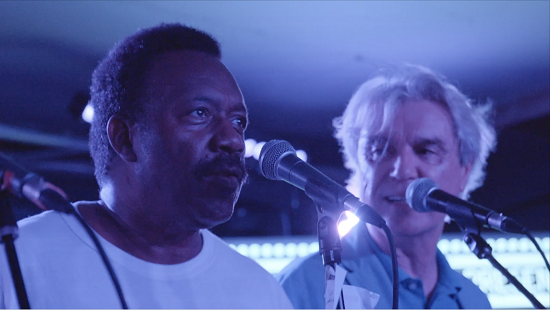
Blunt and David Byrne
Hug’s film is terrific. As well as capturing the joy of their performances across the world, where love for Blunt’s music flows not just from those in the audience but from those who’ve joined his bands, it presents in Blunt a truly inspirational figure, whose enthusiasm for life and music is the at the film’s heart. “Doug is one of the most unique people I have ever met and he is completely undefined by age, race, social status, you name it.” Hug says. “He has been a huge inspiration in the last 4 years of my life and I will take elements of him with me wherever I go in this world.”
Whenever you speak to someone who’s met Blunt, one of the first things they’ll mention is his laugh. Even through the scratchy international phone line through which tQ speaks with him, it resounds with infectious joy within seconds as we ask what he made of the film. “I thought it was beautifully done,” he says with the kind of smile that you can almost hear. “I especially enjoyed my wife talking. My daughter was supposed to come in too, but she couldn’t get out of bed in time!” He recalls the joy of recording Gentle Persuasion with almost childlike glee: “With the synthesiser I could put all sorts of sounds on it, horns, cowbells, all that stuff. Playing the music live with the band was a lot of fun, it was beautiful.”
One of the most entrancing moments in the film is where we see the only footage of Blunt’s first band from a Public Access TV brodacst, halfway through which he unleashes a guitar solo of staggering power – part chucking funk, part spiky post-punk part searing psychedelic rock, but in another dimension to all three. Inspired by the likes of Jimi Hendrix and BB King, but unable to find a way to imitate their styles, he simply worked his way around. “I thought ‘I can’t do it!’ and I got a bit depressed, so I tried something else! I started thinking about when I used to study boxing and stuff, that always came to mind when I played those solos, the rhythm of the speed bag, not punching a person!” he laughs once more.
“There’s a beauty in the naivety of Doug’s original recordings that I hope was captured in each performance and in the larger film itself,” says Hug. “You can hear the original players figuring out their own limitations and how to interact with each other in real time which is exactly what happened in each of Doug’s shows, where seasoned professionals met 12-15-year-olds and Doug’s music was the common language we strangers used to get to know each other. For each show, the process was virtually identical. Doug arrives a few days before the show, we rehearse two or three times, maybe grab dinner together to get to know each other after rehearsals, then do the show which is generally around 70% improvised.”
One of the most charming performances is a warm-up guerilla gig in New York, featuring a band including Clover And The Clockworks among other musicians. “It was supposed to be at Commend,” Hug recalls, “a great little record store in the LES just down the street from Luaka Bop’s office. Once we got there, we quickly realized that our 10-piece band with equipment barely fit in there, let alone the growing audience that was lined up outside. We improvised quickly and ran power over to the park across the street and, as you can see in the film, the audience helped us run all the gear over there and we played four songs before the Parks Department arrived to shut us down. Doug’s sweet-talk to the lady Parks Officer bought us an extra song, which was pretty magical…”
In another scene, we see Blunt return to the hospital where he once worked, and where just as when he forms a new band or plays a new show, his outpouring of joy is reciprocated by his former colleagues. “I was an ironworker for about four or five years and I couldn’t stand it,” he says. “I would get dirty every day and it was a hassle, so I went to school for nursing, something a bit more… helping someone else, you know?” Sadly, no footage remains of the gigs he’d play on the ward, often populated by patients from the city’s most underprivileged communities. “I wanted to give them something to do,” Blunt says. “It was like they were part of the family.”
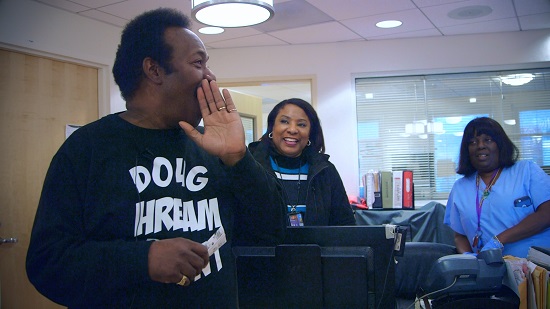
Blunt with some of his former hospital colleagues
After Gentle Persuasion was recorded, Blunt continued to sing in the hospital and write music, but life began to take over. “I got married twice, and when you’re young and you get married, everything is based around the marriage. You’ve got to pay the bills!” he laughs. All the while, that one and only album, which had been self-released on a small privately pressed run, was slowly gaining mythical status. “I’d heard about [its growing reputation] but it was kinda weird,” he says. “I didn’t know why anybody liked it!”
In that time, he also suffered his stroke, after which mobility issues meant that he could no longer play the guitar. In the same way his inability to replicate Jimi Hendrix led him to develop a guitar style that was entirely his own, however, Blunt turned adversity to his advantage. “After something like that you see life as being a beautiful thing, rather than always just feeling upset about this or that.” He was recently diagnosed with cancer, but says it “makes me look at life as being a blessing, a big blessing.”
The stroke, Blunt says, is also one of the reasons he felt no nerves before the film’s climactic performance, a glorious, packed out gig at Baby’s All Right in New York City, where Blunt, Hug, guitarist Luke Jenner of The Rapture and Clover And The Clockworks were joined by special guest and superfan David Byrne. “I’m getting too old to get nervous!” Doug announces with a chuckle. “After the stroke I don’t feel it, I feel happier because the crowd is happier [when it’s bigger]. All I see is more happiness!” In one of the film’s most charming scenes you see the children in the band running gleefully past the queuing crowd outside, and later beaming at their first ever paycheques. “The kids running around was inspiring,” Blunt says. “They bring a real life to it all, and then when they played, how the audience reacted to them playing and being there was very nice.”
Hug, on the other hand, was “definitely nervous. And these shows were so special, a huge deal for me. I had mainly played in basements and house shows in Alabama where I grew up, then done small club shows in NYC so this was very different on every level. I was also in a unique position somewhere between seasoned pros like David Byrne and Luke Jenner and the young students who had never played a show and worked to facilitate communication between them. Also, I pretty quickly realized I wanted to document the process which added an extra layer of expectation. Especially for the shows outside of New York City where I live, it was a lot of work to line up camera operators, record audio of the performances, interview band members, etc. At a certain point, I kind of took over tour managing from Eric which meant I was responsible for getting Doug to and from the shows, helping Doug locate presents for his family (he is a very sweet husband and father), and dealing with the show/rehearsal logistics, on top of being a band-member and filmmaker.”
An immense amount of work, not least on Hug’s and Luaka Bop’s part, went into the film you can see premiering above, but Blunt’s energy blankets it all with a relaxed warmth and joy. “Doug is a sponge, soaking in the world around him, and traveling with him I would consistently be shocked by how open he is to all kinds of unfamiliar art and experiences,” the filmmaker recalls. “For example, I gave him my iPad on our trip to Tasmania and he scoured my entire collection; one minute he’s jamming Mr. Bungle’s ‘California’, next he’s zoning out to Jodorowsky’s ‘Holy Mountain’.”
‘Hream’ can be watched in full above, exclusively via tQ. You can buy Doug Hream Blunt’s music via his Bandcamp here and find Luaka Bop online here


